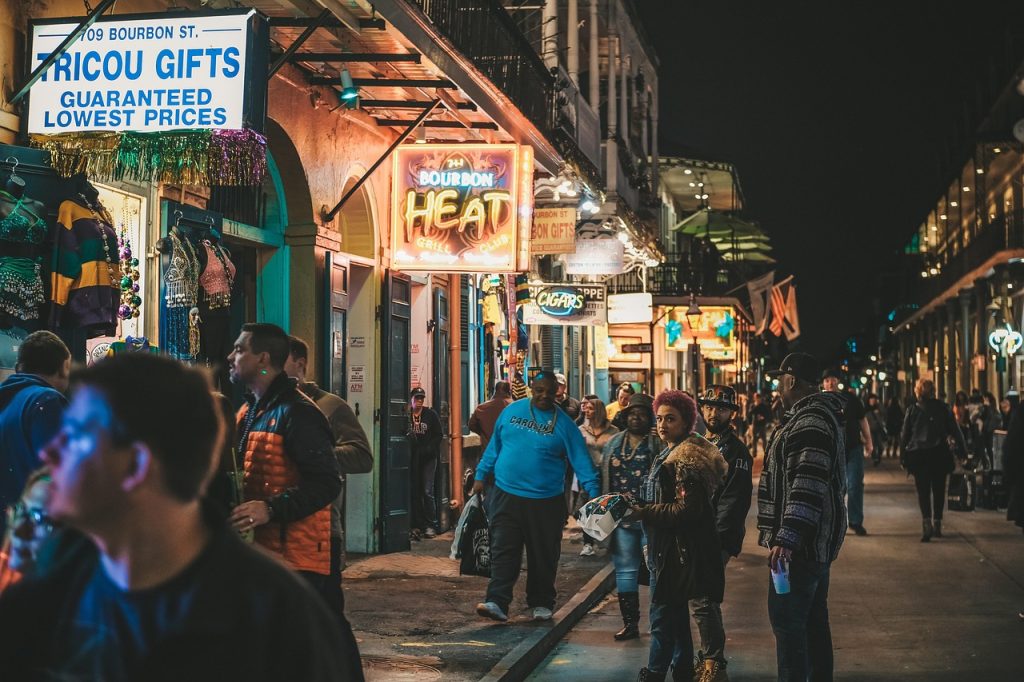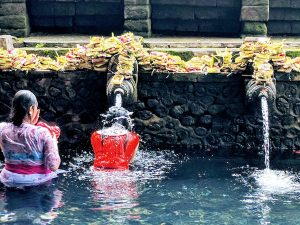Kuta Night Market is where Bali’s everyday life and its tourist heartbeat meet after sundown. Under strings of lights and beneath the pulse of motorbike traffic, narrow alleys fill with the smoke and sizzle of food stalls, the chatter of families, and the steady hum of bargain hunting. For visitors who want to taste real Indonesian street food, pick up inexpensive souvenirs, and watch a local scene that keeps going long after the beach crowds have left, Kuta’s night markets deliver raw, colorful, and unfussy experiences.
This guide goes deep: where to find the market (and which market people mean when they say “Kuta Night Market”), how to eat safely and well, what to buy, how to bargain fairly, transport logistics, sample evening itineraries, safety tips, and how to shop and eat mindfully so your night benefits local vendors and keeps memories good.
Where is Kuta Night Market?

Kuta Night Market can refer to a few closely related evening bazaars in and around the Kuta and Legian area. The most commonly visited spots are compact clusters of stalls along lanes near the main tourist strip — places where food vendors, clothing sellers, and souvenir stalls set up once the sun drops and the daytime shops wind down. Expect to find markets along smaller side streets that feed off the major roads in Kuta, as well as the broader “Kuta Market” area that morphs into a night scene with food courts and street vendors. If you’re asking a taxi or driver, say “Kuta Night Market” or “Pasar Malam Kuta” and they’ll usually head toward the central Kuta shopping streets and small lanes nearby, where the night stalls gather.
The market’s character is distinctly local rather than boutique. This is not a curated artisanal fair; it’s a working, everyday night market where portion sizes are generous, prices are low, and the vibe is immediate and bustling.

When to go: best time and expected hours
Most night markets in Kuta start warming up in the early evening — typically around 5:00–6:00 PM — and bustle until about 9:00–10:00 PM. Peak energy usually sits between 6:30 and 9:00 when after-work locals mix with tourists enjoying dinner on a budget. If you want slightly cooler temperatures and fewer crowds, aim for an early arrival (5:30–6:00 PM); if you want the full social experience with seats filled and tables pulled close, arrive during the peak window. Vendors will often start packing up after 10:00 PM, though a few late-night stalls remain until later in busier weeks.
Also read: 10 Reasons to Choose Karyanusa Asia for Your Bamboo Architecture Project in Bali
The food: what to try and how to eat like a local
Kuta Night Market is primarily a food market — and its strengths are clear: home-style Indonesian cooking, quick grilled seafood, satay, noodles, and a roster of inexpensive comfort dishes that locals and budget travelers favor.
Must-try dishes and stalls:
- Nasi Campur / Nasi Campur Bali: A mixed-plate staple with rice, small portions of meat or fish, vegetables, and sambal (chilli paste). It’s the easiest way to taste several things at once.
- Satay (sate): Skewers of chicken, pork, or goat, grilled over coals and served with peanut sauce or spicy sambal. Fresh off the grill is the best time to eat them.
- Bakso and Mie (meatball soup and fried/stir-fried noodles): Warm bowls ideal for cooling evenings; watch the vendors cook to see hygiene practices.
- Grilled seafood: Fresh catches – shrimp, squids, fish – charred and seasoned. Ask about freshness and watch how it’s stored on ice.
- Babi Guling slices (where available): Bali’s spit-roasted pig is sometimes present at specialist stalls; it’s rich and best eaten in small portions.
- Local desserts and snacks: Kue (small traditional cakes), pisang goreng (fried bananas), and tropical fruit cups.
Practical food tips:
- Pick busy stalls. High turnover usually means fresher food. If a vendor is drawing a crowd of locals, it’s a good sign.
- Watch cooking hygiene. A clean workspace, gloves or tongs for handling food, and properly covered ingredients reduce risk. If a stall looks unclean, move on.
- Ask for “no chili” or “sedikit pedas” if you prefer less heat — Indonesian food commonly runs spicy.
- Sit at a communal table and watch how dishes are served to learn what locals order together.
What else is sold: shopping beyond food
Kuta’s night vendors sell a broad mix of items, usually at lower prices than daytime tourist shops. Expect to find:
- Clothing: T-shirts, sarongs, beachwear, and inexpensive fashion items.
- Accessories: Sunglasses, hats, woven bags, and bracelets.
- Souvenirs: Fridge magnets, trinket boxes, and Bali-themed keepsakes.
- Household items and cheap electronics: From phone chargers to plastic kitchenware — often priced to move.
- Local crafts and small artisan items: Less common in Kuta’s night market than in Ubud or artisan markets, but you’ll still find occasional handmade jewelry or carved products.
For meaningful purchases, prioritize stalls where you can see the maker or where craftsmanship looks deliberate rather than mass-printed. For inexpensive, everyday items, haggling is part of the interaction (see bargaining tips below).
How to bargain: get a fair price without offense
Bargaining at Kuta Night Market is normal but it’s expected to be light-hearted and polite. A few practical tactics:
- Start lower, but reasonable: Try offering about 30–50% of the first price for non-fixed goods, then meet in the middle. Sellers expect negotiation.
- Don’t haggle for food: Food prices are often fixed and already low; haggling for your meal is considered rude.
- Use cash: Small denomination bills make change easy and speed transactions.
- Buy in bundles: If you want several similar items, ask for a bundled price — sellers are often willing to cut a small discount for multiple purchases.
- Keep a smile: Sellers appreciate friendly negotiation; an annoyed tone will kill goodwill and the deal.
Remember that many vendors rely on market income; striking a balance between a good tourist bargain and a fair seller price is ethical and keeps the market sustainable.
Practical logistics: getting there, parking, and transport
- Location & taxis: Kuta’s markets are centrally located; from Kuta Beach or the main tourist strip it’s a short ride. If you use a ride-hailer app or blue taxi, request drop-off near the main market lanes or Kuta shopping streets and walk into the market alleys.
- Scooters: If you rent a scooter, park in official areas; local attendants often help and expect small fees. Avoid leaving bags or valuables on parked bikes.
- Walking: If you’re nearby (Seminyak, Legian), walking is possible but be cautious of busy roads and avoid unlit shortcuts at night.
- Timing: Plan transport back before the last late-night public transport options thin out; ride-hailing services surge during peak hours so expect longer waits at very late hours.
Money and safety: practical precautions
- Carry cash (small notes): Most stalls prefer cash; small denominations (IDR 20k and 50k) are handy.
- Watch your belongings: Markets are crowded; use a cross-body bag or keep valuables zipped and close. Pickpockets are a risk in dense crowds worldwide, so stay aware.
- Check change carefully: Vendors are busy; confirm the change you receive before you walk away.
- Bring hand sanitizer and napkins: Street-eaten foods can be messy; cleaning up helps prevent stomach issues and keeps you comfortable.
- Use bottled water: For drinking, bottled or filtered beverages reduce the risk of waterborne upset. If buying freshly cut fruit, watch how vendors wash or display it—choose stalls that use clean containers.
Accessibility and who the market suits best
Kuta Night Market is best suited to travelers who enjoy street food and lively public spaces with lots of sensory input: crowds, noise, and heat. The alleys can be narrow and steps or temporary tables may create uneven surfaces — mobility limitations might make navigation difficult. Families with children can enjoy the food but keep kids close and move slowly through congested lanes.
Sample evening itineraries
Food-first quick tour (2–3 hours)
- 6:00 PM — Arrive and scan the food row to see what’s cooking.
- 6:10 PM — Sit at a busy stall and order a satay plate plus a small seafood or noodle dish.
- 6:40 PM — Walk through shopping lanes, pick up a souvenir, bargain, and compare prices.
- 7:15 PM — Finish with a local dessert stall (pisang goreng or kue) and head to a nearby bar or café for a cold drink.
Market + sunset (relaxed)
- 5:00 PM — Watch sunset at Kuta Beach.
- 6:30 PM — Walk to the night market; have a shared meal with friends to taste more items.
- 8:00 PM — Explore the market, try snacks, and pick up small handmade gifts.
- 9:30 PM — Return to your hotel or head to a live music venue if energy’s high.
Also read: Top 10 Architect Services in Bali for Stunning Tropical Designs
Sustainability and ethical tips
- Bring your own bag for purchases to reduce single-use plastic.
- Choose vendors who use local ingredients — this supports the local food chain and lowers environmental impact.
- Favor handmade, locally made goods over cheaply produced, imported novelties.
- Leave a small tip for excellent service — many stall operators appreciate the extra support.
- Respect opening and closing times — don’t haggle aggressively as stalls are packing up; it’s courteous to allow vendors to close.
Final thoughts
Kuta Night Market is less about glossy souvenirs and more about real, approachable Indonesian life after dark. It’s where tuk-tuks (bemos), families, workers, and tourists rub shoulders; where meals are community-sized and prices are friendly; and where small vendors feed both bellies and local economies. For those willing to trade a little comfort for a lot of authenticity, the market is one of Bali’s best low-cost nights out.
The key to getting the most out of Kuta’s night scene is curiosity plus common sense: wander slowly, eat where the locals gather, be polite when bargaining, and carry small bills. If you do that, you’ll leave with full plates, a few bargain finds, and a clearer picture of Bali’s lively evening life — and maybe a new favorite snack you hadn’t tasted before.

Rafini
Rafini is a seasoned marketing sales expert with over 15 years of experience in the hospitality industry, specializing in commercial renovation in Bali. Having honed her skills at renowned establishments like Accor and Anantara, she possesses a deep understanding of client needs and market dynamics.
Currently serving as a Regional Manager, Rafini excels in driving sales strategies and fostering strong relationships to enhance brand visibility and profitability across her region.




